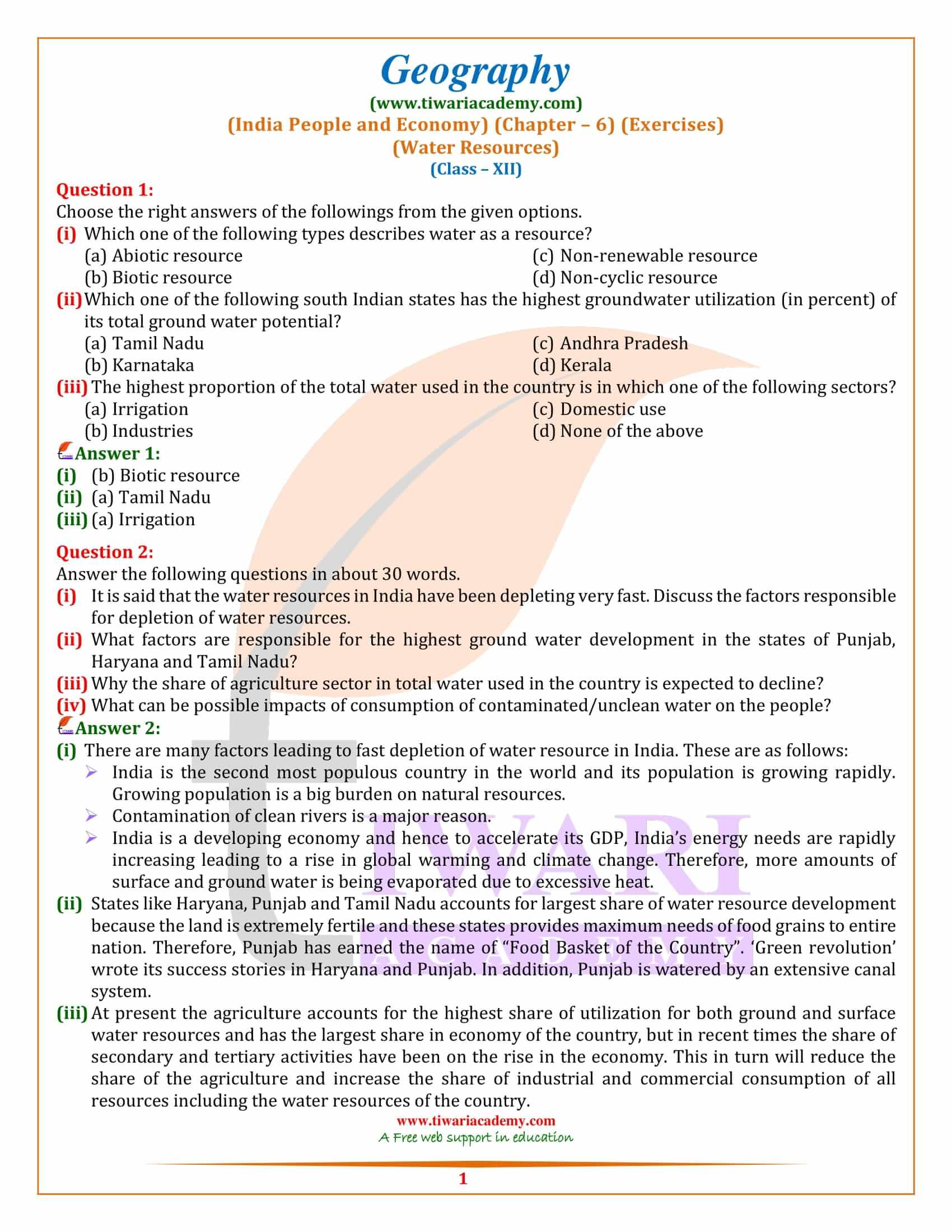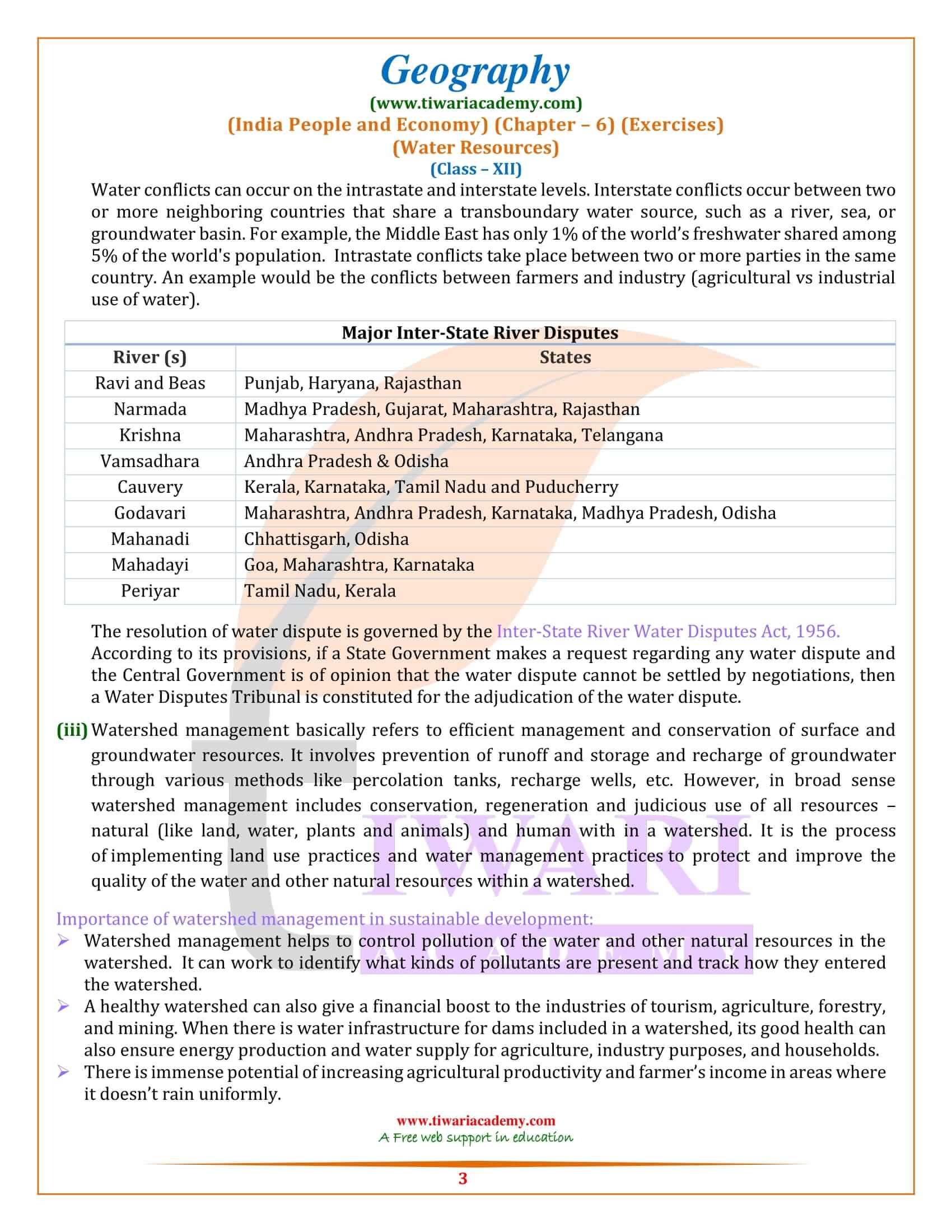NCERT Solutions for Class 12 Geography Chapter 6 Water Resources question answers in Hindi and English Medium updated for CBSE 2024-25. All the extra and important questions related to 12th Geography chapter 6 of India People and Economy Unit III are given here for exam preparation.
NCERT Solutions for Class 12 Geography Chapter 6
Class 12 Geography Chapter 6 Water Resources Question Answers
It is said that the water resources in India have been depleting very fast. Discuss the factors responsible for depletion of water resources.
There are many factors leading to fast depletion of water resource in India. These are as follows:
- India is the second most populous country in the world and its population is growing rapidly. Growing population is a big burden on natural resources.
- Contamination of clean rivers is a major reason.
- India is a developing economy and hence to accelerate its GDP, India’s energy needs are rapidly increasing leading to a rise in global warming and climate change. Therefore, more amounts of surface and ground water is being evaporated due to excessive heat.
What factors are responsible for the highest ground water development in the states of Punjab, Haryana and Tamil Nadu?
States like Haryana, Punjab and Tamil Nadu accounts for largest share of water resource development because the land is extremely fertile and these states provides maximum needs of food grains to entire nation. Therefore, Punjab has earned the name of “Food Basket of the Country”. ‘Green revolution’ wrote its success stories in Haryana and Punjab. In addition, Punjab is watered by an extensive canal system.
Why the share of agriculture sector in total water used in the country is expected to decline?
At present the agriculture accounts for the highest share of utilization for both ground and surface water resources and has the largest share in economy of the country, but in recent times the share of secondary and tertiary activities have been on the rise in the economy. This in turn will reduce the share of the agriculture and increase the share of industrial and commercial consumption of all resources including the water resources of the country.
Class 12 Geography Chapter 6 MCQ
Which one of the following types describes water as a resource?
Which one of the following south Indian states has the highest groundwater utilization (in percent) of its total ground water potential?
The highest proportion of the total water used in the country is in which one of the following sectors?
What can be possible impacts of consumption of contaminated/unclean water on the people?
Drinking water contains unsafe levels of contaminants; it can cause health effects, such as gastrointestinal illnesses, nervous system or reproductive effects, and chronic diseases such as cancer.
Factors that can influence whether a contaminant will lead to health effects include the type of contaminant, its concentration in the water, individual susceptibility, the amount of water consumed, and the duration of exposure. If water sources are contaminated with radium or radon gas, humans might not notice an immediate health effects. However, long term exposure has been linked to cancer and heart disease.
What is watershed management? Do you think it can play an important role in sustainable development?
Watershed management basically refers to efficient management and conservation of surface and groundwater resources. It involves prevention of runoff and storage and recharge of groundwater through various methods like percolation tanks, recharge wells, etc.
However, in broad sense watershed management includes conservation, regeneration and judicious use of all resources – natural (like land, water, plants and animals) and human with in a watershed. It is the process of implementing land use practices and water management practices to protect and improve the quality of the water and other natural resources within a watershed.
Importance of watershed management in sustainable development:
Watershed management helps to control pollution of the water and other natural resources in the watershed. It can work to identify what kinds of pollutants are present and track how they entered the watershed.
A healthy watershed can also give a financial boost to the industries of tourism, agriculture, forestry, and mining. When there is water infrastructure for dams included in a watershed, its good health can also ensure energy production and water supply for agriculture, industry purposes, and households.
There is immense potential of increasing agricultural productivity and farmer’s income in areas where it doesn’t rain uniformly.





